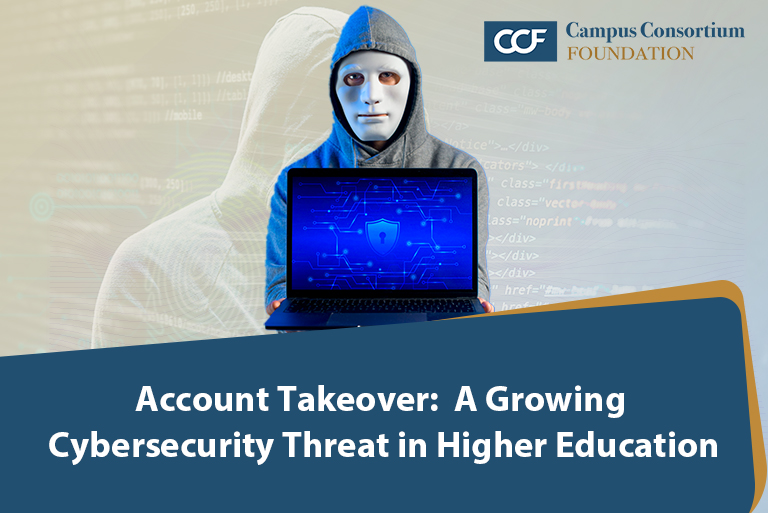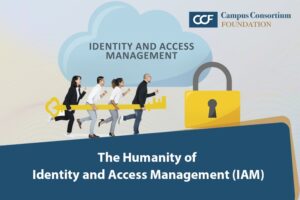Account Takeover (ATO) attacks pose an insidious cybersecurity threat, risking the security of sensitive data and the reputation of colleges and universities. Personal and institutional information is highly sought-after by cybercriminals and it is imperative that higher education institutions take proactive steps to mitigate ATO risks.
What is Account Takeover and Why Is It Important for Higher Education?
Account Takeover occurs when a cybercriminal gains unauthorized access to a user’s account credentials, allowing them to impersonate the legitimate user. Once inside, attackers can conduct malicious activities such as altering account details, send phishing emails, steal financial or sensitive data, and access other accounts. The negative impact of ATO is far-reaching resulting in the loss of billions of dollars and increasing risks to organizations of all types.
Higher education faces unique challenges in combatting ATO. Educational institutions handle vast amounts of confidential information, including student records, payroll data, and sensitive research materials. Increasing numbers of faculty, students, and administrators use technology and data every day providing a large attack surface and numerous potential entry points for cybercriminals.
How Account Takeovers Affect Higher Education Institutions
Cybercriminals target several education departments who access sensitive information including:
- IT Departments: These teams manage technical infrastructure, network security, and data systems. If compromised, attackers could potentially access an institution’s entire digital infrastructure.
- Human Resources: HR departments store sensitive employee information, manage payroll, and handle other financial data. This makes them a lucrative target for cybercriminals seeking to misuse confidential data.
- Institutional Leadership: Higher-level administrators often have access to broad segments of an institution’s systems. If their accounts are compromised, attackers can gain access to a range of sensitive information or orchestrate large-scale fraud.
Common Methods of Account Takeover
Higher education institutions must be aware of the various tactics that cybercriminals use to execute ATO attacks. Some common methods include:
- Phishing: Cybercriminals send fake messages, tricking users into providing login credentials or other sensitive information.
- Credential Stuffing: This tactic exploits users’ tendency to reuse passwords across different platforms. Hackers test stolen credentials against multiple sites, looking for matches.
- Malware: Attackers use malicious software, like keyloggers, to record user keystrokes or steal stored login credentials.
- Social Engineering: Cybercriminals gather personal information to make educated guesses about passwords or security answers, bypassing traditional security measures.
Protecting Against Account Takeover: A Proactive Approach
Sophisticated ATO attacks means higher education needs a multi-layered approach to defend their vulnerable population. Institutions can benefit from implementing Identity and Access Management (IAM) solutions that include the following key features:
- Single Sign-On (SSO): Simplifies login processes and reduces the number of credentials users must remember, helping to prevent weak or reused passwords.
- Adaptive Multi-Factor Authentication (MFA): Adds extra layers of verification that vary according to the risk level of the login attempt. This approach can help flag and prevent unauthorized access.
- Passwordless Options: By reducing reliance on traditional passwords, these solutions make it harder for attackers to gain unauthorized access.
- Self-Service and Identity Lifecycle Management: Ensures users can securely manage their accounts, and that access is promptly revoked for accounts that are no longer active.
Why Proactive Measures Matter
Account Takeover attacks have significant implications for higher education. Beyond financial losses, they can harm an institution’s reputation, disrupt operations, and compromise the security of everyone connected to the organization. By adopting proactive security practices, higher education institutions can better protect their students, faculty, and staff from the risks associated with ATO, fostering a safer and more resilient academic environment.




